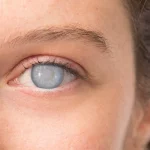What is contact tracing?
Contact tracing is the process of identifying people who have been in contact with an infected person. Informing contacts that they may have been exposed to an infection will help slow the spread of that condition.
If you’re an infected person, your doctor may ask for the details of any people you’ve been in contact with. Doctors can then test your contacts and treat them to help prevent the spread of the condition. Contacts are sometimes offered counselling as well.
Contact tracing is commonly used to find the contacts of people with sexually transmitted infections (STIs) such as HIV, as well as the bacteria that causes blood borne viruses such as tuberculosis and airborne viruses such as meningococcal disease.
Contact tracing is being used to help identify Australians in the community at risk of monkeypox. Until recently, contact tracing was also widely used to identify communities at risk from COVID-19. Contact tracing may still be used in high-risk settings such as aged care facilities, disability care facilities and hospitals.
When is contact tracing recommended?
If you have certain types of infections or diseases that can be passed onto other people you have come into contact with, contact tracing is recommended. How far back you go when contacting sexual partners, depends on the STI. This includes the following STIs:
- chlamydia — 6 months
- gonorrhoea — 12 months
- syphilis — up to 12 months
- trichomoniasis
Contact tracing is also recommended for other infectious diseases such as:
- HIV
- hepatitis A, B and C
- Ebola virus
- measles
- tuberculosis
- meningococcal disease
- monkeypox
- severe acute respiratory syndrome (SARS)
- SARS-CoV-2 — COVID-19
Who are my contacts?
Your doctor or other healthcare professional will be able to help you identify your contacts, as the definition of a contact depends on the nature of the disease and how it is spread.
- In the case of STIs, your contacts include anyone you have had sexual contact with, and regardless of whether the sex was protected or unprotected (if you used a condom or not).
- For blood-borne viruses, such as HIV or hepatitis B, contacts include any sexual partners as well as anyone you might have shared needles with or exposed to your blood.
- For tuberculosis or meningococcal disease, a contact is usually someone you have had close and prolonged contact with, such as someone who lives in the same household.
- For COVID-19, the definition of close contacts changes based on local coronavirus loads and government decisions in your area. The COVIDSafe app is no longer being used for contact tracing purposes, so you can uninstall the COVIDSafe app from your device. All COVIDSafe app data has now been deleted from the National COVIDSafe Data Store.
Depending on the type of infection, your contacts might include:
- your sexual partners
- people with whom you shared needles
- anyone exposed to your blood
- anyone who came in contact with your blood, saliva, vomit or body fluids
- people who may have spent a long time with you in a confined space, such as in an office, classroom or plane
- close relatives or friends who share your household, or have been in your home
- anyone who has touched you, for example shook your hand
- people who ate food you prepared or made food for you
Talk to your doctor to find out who your close contacts are and what steps you need to take.
What are the steps involved in contact tracing?
- Review the reasons contact tracing is needed
- Your doctor or healthcare professional will explain why contacts need to be informed. Often carriers have no symptoms and are unaware that they have a disease.
- There are possible serious complications for partners if partners are not tested and treated, as well as a risk of reinfection where relevant.
- Identify who needs to be contacted
- Your doctor or healthcare professional will ask you questions about specific contacts, such as the type of contact you had, and over what time period. In the case of STIs, you may need to trace back contacts from the relevant time periods.
- Inform your contacts
- If you have a preference, you can tell your doctor or health professional how different contacts should be informed, either in person or through the healthcare provider
- Patient initiated — you can notify the contact/s in person, anonymously or using an external resource such as the Let Them Know This website has examples of simple letters and messages to send your sexual contacts. This service allows you to sign the messages personally or send them anonymously.
- Provider initiated — You can also ask the doctor or health professional to arrange it. Your doctor or health professional can withhold your name from your contacts if you wish.
If you decide to let contacts know personally, you will be given factsheets to share with them. The Let Them Know website has examples of simple letters and messages that you can send to your sexual contacts, for example. This service allows you to sign the messages personally or send them anonymously.
All contacts will be encouraged to visit a doctor or clinic. They are likely to be offered counselling, testing and treatment. For some conditions, such as meningococcal disease, they may be offered vaccinations.
In the case of COVID-19, close or household contacts of a confirmed case may be asked to self-isolate for a period of time.
- If you have a preference, you can tell your doctor or health professional how different contacts should be informed, either in person or through the healthcare provider
- Notify health authorities
- This step is usually done by the laboratory that first confirmed your diagnosis, or may be done by your doctor or clinic.
- Public health notification requirements differ between conditions.


